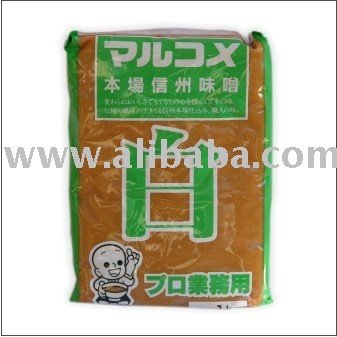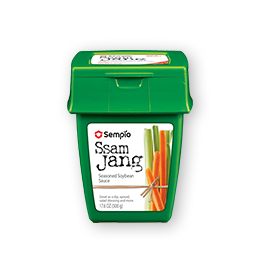

- #Soybean paste how to
- #Soybean paste plus
Knead each portion with both hands and shape into a firm rectangular block measuring 6 x 3 x 4 inches.
Divide the mashed beans into 3 portions. Don’t finely grind them, leave some beans half-crushed. Mash the drained beans to a paste in batches with a large mortar and pestle or in a food processor. Turn the heat down to medium and continue cooking until the beans are soft enough mash easily, 4½ to 5 hours, checking to make sure the beans remain covered with water, and replenishing as necessary. Add water that is three times as deep as the beans, cover, and cook over medium-high heat for 1 hour. Drain the beans and put them in a large heavy pot. #Soybean paste how to
How to make doenjang Make meju blocks from soybeansīlocks of crushed soybeans are called meju (메주) in Korean, and they’re the foundation of doenjang-making.
#Soybean paste plus
5 quarts plus ½ cup kosher salt (2 three-pound boxes of Diamond Crystal brand Kosher salt).5 pounds dried yellow soybeans (meju-kong), picked over, rinsed, and soaked in cold water for 24 hours.3 (4-x-1½-x-1-inch) pieces hardwood charcoal.3-5 large dried hot chili red peppers (any variety about 4 inches long).
 A 5-quart Korean earthenware crock (hangari) with a lid. A 4- to 5-gallon Korean earthenware crock (hangari) with a lid. A cardboard box (an 18-x-10-x-7-inch box will hold 3 bean blocks). Dried rice straw or hay that’s been well washed and dried (optional). A large shallow bamboo basket about 17 inches in diameter, or a large baking pan lined with waxed paper. An electric mat or blanket, or ondol-style heating in your house. I hope you try it! Enjoy the recipe! Special equipment But I discovered that indoors, in my apartment in New York, any time is a good time to start making doenjang. It’s finally finished and I couldn’t be happier to share my recipe with you! Koreans traditionally start the process in the winter because the weather is good for drying soybean blocks. The recipe took me 2 years to develop, and the video took another year to film. But the taste of store-bought can’t be compared to homemade doenjang and guk-ganjang, you will be knocked out over how delicious they are! And I’ve never found a brand of soup soy sauce in the store that satisfied me, which is why I always use fish sauce in my recipes as a substitute.īesides the taste, making your own is fun and satisfying to eat. Over years of making, tasting, and fermenting these iconic Korean sauces, you’ll develop experience and sophistication in fermenting and eventually become a Korean food expert. Of course, you can always buy doenjang and guk-ganjang in a Korean grocery store, which is what most Koreans do. But as a bonus, Korean soup soy sauce (guk-ganjang:국간장) is a byproduct of making doenjang, so you get that delicious soy sauce for free! Making doenjang at home takes a long time, you have to be ready to commit to it for one year! It’s not hard to make, but takes patience and some hard work, and some special equipment. Salty, earthy, hearty, incredibly savory and delicious, it adds flavor to many dishes and makes them distinctively Korean. A meal of rice, kimchi, doenjang-soup (or doenjang-stew), and a few side dishes is for many Koreans, the definition of a meal: breakfast, lunch, or dinner. It’s impossible for us to imagine life without doenjang.
A 5-quart Korean earthenware crock (hangari) with a lid. A 4- to 5-gallon Korean earthenware crock (hangari) with a lid. A cardboard box (an 18-x-10-x-7-inch box will hold 3 bean blocks). Dried rice straw or hay that’s been well washed and dried (optional). A large shallow bamboo basket about 17 inches in diameter, or a large baking pan lined with waxed paper. An electric mat or blanket, or ondol-style heating in your house. I hope you try it! Enjoy the recipe! Special equipment But I discovered that indoors, in my apartment in New York, any time is a good time to start making doenjang. It’s finally finished and I couldn’t be happier to share my recipe with you! Koreans traditionally start the process in the winter because the weather is good for drying soybean blocks. The recipe took me 2 years to develop, and the video took another year to film. But the taste of store-bought can’t be compared to homemade doenjang and guk-ganjang, you will be knocked out over how delicious they are! And I’ve never found a brand of soup soy sauce in the store that satisfied me, which is why I always use fish sauce in my recipes as a substitute.īesides the taste, making your own is fun and satisfying to eat. Over years of making, tasting, and fermenting these iconic Korean sauces, you’ll develop experience and sophistication in fermenting and eventually become a Korean food expert. Of course, you can always buy doenjang and guk-ganjang in a Korean grocery store, which is what most Koreans do. But as a bonus, Korean soup soy sauce (guk-ganjang:국간장) is a byproduct of making doenjang, so you get that delicious soy sauce for free! Making doenjang at home takes a long time, you have to be ready to commit to it for one year! It’s not hard to make, but takes patience and some hard work, and some special equipment. Salty, earthy, hearty, incredibly savory and delicious, it adds flavor to many dishes and makes them distinctively Korean. A meal of rice, kimchi, doenjang-soup (or doenjang-stew), and a few side dishes is for many Koreans, the definition of a meal: breakfast, lunch, or dinner. It’s impossible for us to imagine life without doenjang. 
Korean fermented soybean paste, called doenjang (된장), is more than just a seasoning or an essential ingredient in many iconic Korean dishes. It’s part of who we are as Koreans and how we see ourselves. It’s one of the recipes in my cookbook, and whether you have my book or not, this video and recipe should still be useful to you. Add Korean beef stock powder (1/2 tbsp).Hello everybody! I know some of you have been waiting for my doenjang and ganjang recipes for a long time! Today I feel a real sense of achievement to release this recipe here. Taste and add more doenjang if necessary. Let it continue to boil for about 7 to 10 minutes. Add all the ingredients (except the tofu): mushrooms, zucchini, onion and green onions. Bring it to a boil over medium-high heat for about 10 minutes.Ģ. Give it a good stir until you can’t see any big chunk of soybean paste. In a pot, add 4 cups (960ml) of water, radish, beef, Korean soybean paste, Korean chili pepper flakes, and minced garlic. Cut the radish, zucchini, onion, mushrooms, and tofu into bite-sized pieces.ġ. Thinly slice the green onions and chili peppers (if using).Ģ. 1/2 tbsp Korean beef stock powder (dasida)ġ.1 tbsp Korean chili pepper flakes (gochugaru).2 shiitake mushrooms (or oyster, enoki, button mushrooms) (2.1 oz, 60g).3.5 oz (100g) Korean radish (or daikon radish).1/2 mild red chili (optional), for garnish.1/2 green chili (optional), for garnish.







 0 kommentar(er)
0 kommentar(er)
